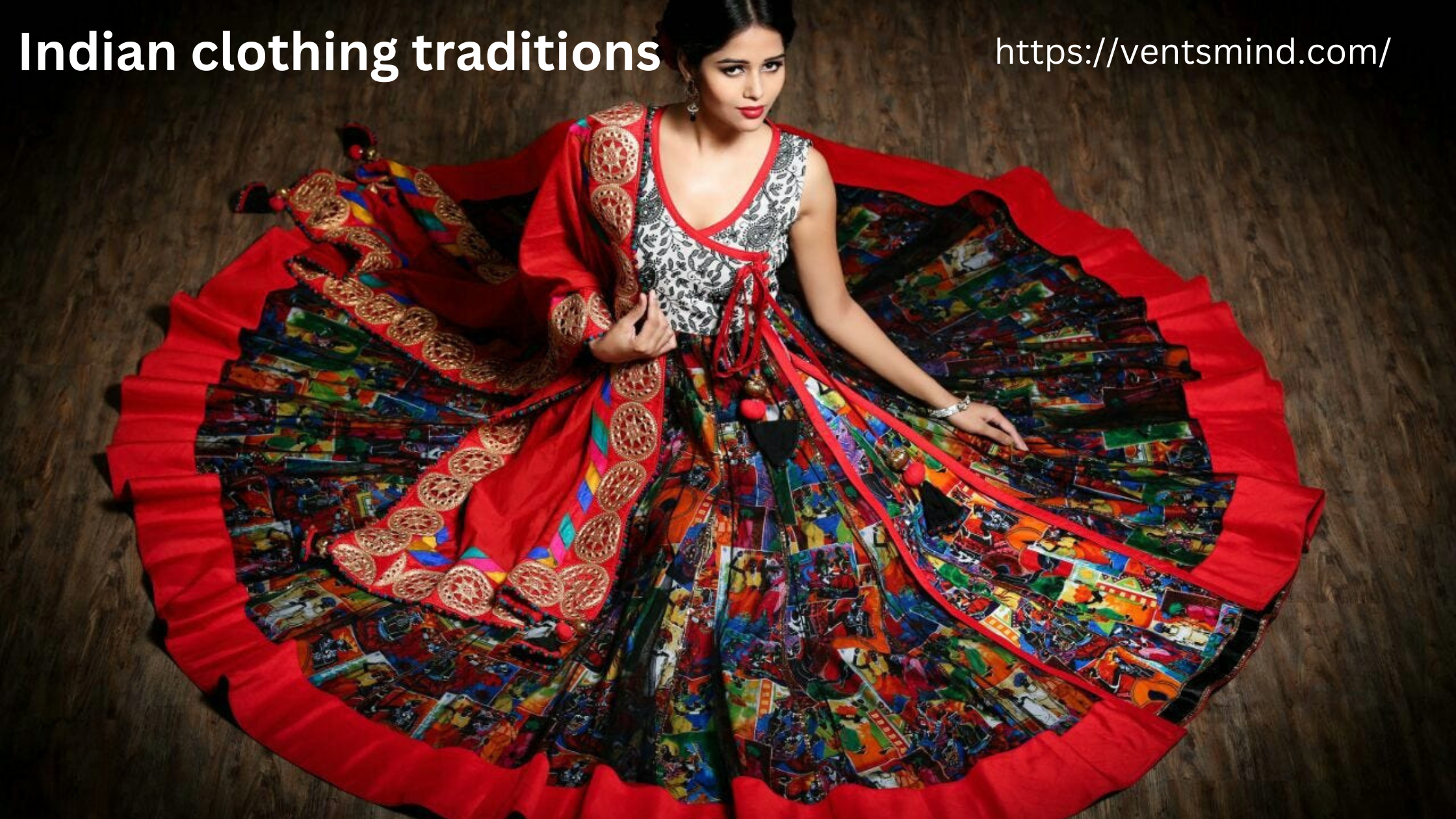
Indian clothing traditions best 2024: A Journey Through Culture, Heritage, and Fashion
indian clothing traditions, a country with a rich and diverse cultural heritage, has long been recognized for its unique and vibrant clothing traditions. The attire in India is as diverse as the country itself, with each region, religion, and community contributing to a kaleidoscope of styles, fabrics, and designs. indian clothing traditions is more than just fabric and fashion; it reflects the social, cultural, and religious values of the nation, representing both continuity and change through the centuries.
From the flowing drapes of the saree to the intricate embroidery of the sherwani, Indian clothing is steeped in tradition while continually evolving with modern trends. This article explores the historical significance, regional diversity, and modern transformation of Indian clothing traditions.
Historical Significance of indian clothing traditions
indian clothing traditions has a long and illustrious history, influenced by its geographical location, climate, and interactions with other cultures. The traditional garments of India date back thousands of years, with evidence of elaborate clothing found in ancient Indian scriptures, art, and sculptures. The Indus Valley Civilization (circa 2500 BCE) is known to have produced cotton textiles, which were traded with neighboring civilizations like Mesopotamia and Egypt.
Ancient Influences
In ancient India, the clothing traditions were influenced by religious beliefs, climatic conditions, and available resources. The earliest forms of Indian attire, such as the antariya (a type of lower garment worn by both men and women) and the uttariya (a shawl or scarf-like garment), were simple draped fabrics made of cotton or linen. These garments were often unstitched and draped in various ways to suit the occasion or social status.
The Vedic period (1500 BCE – 500 BCE) introduced more structured garments, with clothing becoming an important symbol of social hierarchy. Upper-class individuals wore intricately woven fabrics, while simpler garments were reserved for the lower classes. During this time, clothing began to reflect the diverse climates of India, with lighter fabrics used in warmer regions and woolen garments in colder areas.
Influence of Foreign Invaders
The entry of foreign invaders, such as the Mughals, Turks, and Persians, introduced new fabrics, styles, and designs into indian clothing traditions. The Mughals, in particular, had a profound impact on Indian fashion, bringing with them luxurious textiles such as silk, velvet, and brocade. The Mughal period (16th to 18th century) saw the rise of intricate embroidery, embellishments, and garments like the salwar kameez, churidar, and sherwani.
The British colonial period further influenced Indian clothing, as Western styles such as trousers, blouses, and jackets were introduced. However, even during colonial rule, traditional Indian attire remained deeply rooted in cultural and religious practices, and post-independence, there was a resurgence of pride in traditional clothing styles.
Regional Diversity in indian clothing traditions
India is home to a variety of clothing traditions, with each region having its own unique styles, fabrics, and techniques. The country’s diverse geography, ranging from the Himalayas in the north to the coastal regions of the south, has contributed to this regional variation. The distinct clothing styles of different regions are often a reflection of the local climate, culture, and history.
Northern India
Northern India, particularly Rajasthan, Uttar Pradesh, and Punjab, is known for its vibrant and colorful clothing traditions. In Rajasthan, the ghagra choli (a long skirt paired with a fitted blouse) and the odhani (a type of dupatta) are commonly worn by women. The state’s harsh desert climate is reflected in the light, airy fabrics and bright colors that characterize Rajasthani attire.
In Punjab, the salwar kameez (a long tunic paired with loose pants) is the traditional dress for women, while men wear the kurta pajama or sherwani. The phulkari embroidery of Punjab is famous for its intricate floral designs, often used to adorn dupattas and shawls.
In Kashmir, the cold climate has given rise to the traditional pheran, a long woolen robe worn by both men and women, often paired with the pashmina shawl, which is renowned worldwide for its softness and warmth.
Southern India
Southernindian clothing traditions are deeply influenced by its tropical climate and rich cultural history. In states like Tamil Nadu, Kerala, and Karnataka, the saree is the most prominent form of women’s clothing. The saree is a versatile garment, ranging in length from 5 to 9 yards, and is draped in various styles depending on the region and occasion. South Indian sarees, particularly the Kanjeevaram silk sarees from Tamil Nadu, are known for their rich colors, gold zari work, and elaborate borders.
In Kerala, the mundu (a white or off-white cotton drape) is traditionally worn by both men and women. Women pair the mundu with a blouse, while men wear it as a dhoti-like garment. The simple elegance of the Kasavu saree, made of handwoven cotton with a golden border, is synonymous with Kerala’s cultural festivals and traditions.
Eastern India
Eastern India, including West Bengal, Assam, and Odisha, has its own distinct clothing traditions. In West Bengal, the tant saree and Baluchari saree are widely popular. The Baluchari saree, known for its elaborate motifs and storytelling through woven designs, often depicts scenes from Hindu mythology.
In Assam, the mekhla chador is the traditional dress for women, consisting of two pieces of cloth draped around the body. Assam is also famous for its silk, particularly muga silk, which has a natural golden sheen and is often used to create sarees and traditional attire.
Odisha is known for its handloom sarees, especially the Sambalpuri saree and ikat textiles, which are created using intricate dyeing techniques. The pattachitra paintings of Odisha, often depicted on sarees and garments, showcase the region’s rich artistic heritage.
Western India
Western India, including Gujarat and Maharashtra, is known for its vibrant textiles and unique draping styles. In Gujarat, the bandhani (tie-dye) technique is widely used to create colorful sarees and dupattas, while the ghagra choli remains a popular traditional outfit for women.
Maharashtra is famous for the Nauvari saree, which is draped in a style similar to a dhoti, allowing for ease of movement. The Paithani saree, a luxurious handwoven silk saree from Maharashtra, is renowned for its intricate designs and rich colors.
Traditional Indian Garments
Indian clothing is incredibly diverse, with a wide array of traditional garments that vary by region, occasion, and social status. Some of the most iconic traditional Indian garments include:
1. Saree
The saree is perhaps the most recognizable form of Indian attire, worn by women across the country. A saree is a long piece of cloth, typically between 5 to 9 yards, draped elegantly around the body. It can be made from various fabrics, including cotton, silk, chiffon, and georgette, and is often paired with a blouse and petticoat. The way a saree is draped differs by region, with notable styles such as the Nivi style from Andhra Pradesh, the Bengali style, and the Maharashtrian Nauvari style.
2. Salwar Kameez
The salwar kameez is a traditional outfit worn by women in northern India, especially in Punjab and Pakistan. The salwar refers to the loose-fitting pants, while the kameez is a long tunic worn over them. The outfit is often paired with a dupatta (scarf) draped over the shoulders. The salwar kameez is a versatile and comfortable outfit, suitable for both casual and formal occasions.
3. Lehenga Choli
The lehenga choli is a traditional garment worn by women during weddings and festivals, especially in northern and western India. The lehenga is a long, flowing skirt, while the choli is a fitted blouse. This outfit is often heavily embroidered with intricate designs, beads, and sequins, making it a popular choice for bridal wear.
4. Sherwani
The sherwani is a traditional outfit worn by men, especially during formal occasions such as weddings. It is a long coat-like garment that is worn over a kurta and churidar (tight-fitting trousers). The sherwani is often made of rich fabrics like silk or brocade and is embellished with embroidery or zari work.
5. Dhoti
The dhoti is a traditional men’s garment, primarily worn in rural India, although it is also worn by men during religious and ceremonial events in urban areas. The dhoti is an unstitched piece of cloth, typically around 5 yards long, draped around the waist and legs. In southern India, it is known as the veshti or mundu.
Indian Clothing in Modern Times
While traditional clothing remains a significant part of Indian culture, modern Indian fashion has evolved to include a blend of Western and traditional influences. Contemporary Indian designers have reinterpreted classic garments like the saree, lehenga, and sherwani, making them more accessible to younger generations.
The rise of Indian fashion on global platforms, such as Bollywood and international fashion shows, has also contributed to the modernization of Indian clothing. Fusion wear, which combines traditional elements with modern silhouettes, has become increasingly popular. For example, sarees are now paired with crop tops, and kurtas are styled with jeans or palazzo pants.
Indian clothing traditions continue to evolve while maintaining their deep-rooted connection to the country’s history and culture. Whether it’s the elaborate sarees worn during weddings or the comfortable salwar kameez for everyday wear , indian clothing traditions reflects the diversity, creativity, and rich heritage of this ancient civilization.
Conclusion
Indian clothing traditions are a testament to the country’s rich cultural heritage and its ability to adapt to changing times. From ancient draped garments to modern fusion wear, Indian attire reflects the country’s diversity, history, and regional variations. Whether it’s the vibrant colors of Rajasthan, the elegant silk sarees of the south, or the intricate embroidery of the north, Indian clothing continues to be a symbol of the country’s cultural identity and a source of pride for its people.


